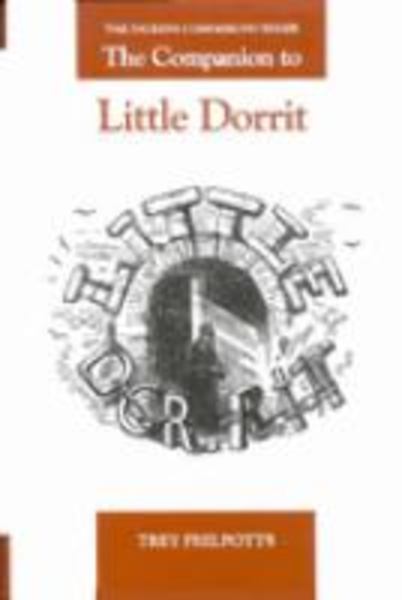The Companion to ‘Little Dorrit’ provides the most extensive information yet available on the political, cultural, and personal backgrounds of a novel that today is considered a central text of Dickens’s ‘dark’ period, and a major work of nineteenth-century literature. The Companion emphasizes the importance of the Crimean War through both the complex political rhetorical surrounding the Circumlocution Office, and Dickens’s depiction of Daniel Doyce, as well as through many other textual details. The Companion also makes important distinctions between administrative reform and civil service reform, and points to differences between boards of inquiry, committees and reports that conventional wisdom has frequently confused. Of special interest are the notes on the political figures of the day—Lord Palmerston, Lord Aberdeen, Sir Charles Treveylan and Austen Henry Layard, among many others—and on the debates in the House of Commons that were reported by The Times and that eventually found expression in Little Dorrit.
Drawing on parliamentary papers and other first-hand accounts, The Companion also paints a vivid picture of life in the Marshalsea prison, enhancing our understanding of insolvency law and the world of the debtor. The notes reveal not only that Dickens was both very knowledgeable about his subject, years after the incarceration of his own father, but also that he excluded the more salacious aspects of life in a debtors’ prison. Equally revealing are the notes on Dickens’s family and friends, particularly on Maria Winter (née Beadnell) who wrote Dickens a few months before he began to write his novel, unleashing a tremendous amount of pent-up emotion and longing, and on such cultural figures as John Sadleir, the bankrupt suicide who was the model for Mr Merdle, and Thomas Griffiths Wainewright and Pierre-Francois Lacenaire, the notorious criminals who inspired Dickens’s characterization of Rigaud, the gentlemanly villain of Little Dorrit. The Companion also uses a newly-discovered Dickens letter to shed light on Tattycoram, the girl from the Foundling Home employed by the Meagles.
As well, The Companion draws on early nineteenth-century travel guides, travellers’ diaries, and, most extensively, on Dickens’s own comments in Pictures from Italy to illuminate the Dorrits’ Continental tour. An especially full appendix on foreign language and foreign speakers highlights Dickens’s own knowledge of French and Italian, discusses his representation of French and Italian speech and provides a list of the devices that he uses to characterize foreign speech and foreign speakers of English. The Companionalso provides detailed explanations of Dickens’s many allusions to art, literature, and popular culture, along with a full-range of illustrations and maps to bring alive the world of the novel to the modern reader.
Trey Philpotts is an Associate Professor of English at Arkansas Tech University. He has published in Dickens Studies Annual, Dickens Quarterly, and The Dickensian, and, since 1995, he has been the Review Editor for Dickens Quarterly.
Of The Companion to Little Dorrit
Philpotts provides annotations to Little Dorrit on a scale hitherto unattempted. Especially helpful is the introduction, which explains that events that underlie the novel, particularly the national debate over the Crimean War. The 470 pages of annotations to specific passages identify allusions and clarify any matter that a modern reader might find obscure. For each of the original 20 serial parts, Philpotts includes a transcript of Dickens’s outline plan. There are 33 illustrations, mainly of places used as settings in the novel and of people thought to have inspired the characters in the novel. The five appendixes include an analysis of the novel’s time line, an explanation of the novelist’s original title, and a discussion of the devices used to signify foreign speech and speakers. This volume is packed with information concerning anything one might want to know about the novel; it is an indispensable tool for every serious student of Dickens.Summing Up: Essential. Lower-division undergraduates through researchers and faculty.”
